Connected Technology is altering the way insurers assess and control risk fundamentals, such as risk transparency. Whereas traditional insurance models involve assessing customers based on variables such as the habits or the category they fit into, connected technologies are designed to assess customers on an individual level, in real time.
So what are connected technologies? And how will insurers use them?
Powered by the Internet of Things (IoT), connected technology refers to everyday objects which have network connectivity, allowing them to send and receive data. This could mean your fridge alerting you that you’re out of milk, or the ability to remotely boil your kettle by the time you get home.
But insurers believe they could also use data collected by your everyday activities to monitor your status as a risk.
The World Insurance Report 2016 defines 3 main categories of connected technology which insurers are interested in:
- Smart eco systems
Smart homes and buildings could include safety functionalities such as indoor and outdoor cameras, motion sensors and door/window sensors linked to alarms. Agreeing to install these anti-burglary measures may lower premiums. Other smart home tech developments include water leak detectors and automatic stop cocks, designed to prevent emergencies and damage which could later lead to claims – and this tech could be used in your business as well as your home.
- Wearable devices
Health-monitoring devices such as fitness bands which measure heart rate, blood pressure, diet and exercise regimes are not only handy for keeping an eye on your health. The data they produce could also be used to assess suitability for life and health insurance policies. A survey by Accenture found that 63% of insurer executives believed wearable technologies would be adopted by 2017.
- Machine intelligence
Driverless cars are the big news in machine intelligence. However, this entirely new kind of autonomous vehicle could cause a major shift in motor insurance as new products and new approaches to insurance would need to be created.
Insurers will need new strategies in order to work with all these new technologies. The ability to gather and extract data will need to be coordinated and developed. Security risks would need to be minimised, both protecting your data from hackers and ensuring there is a clear system of giving consent to have your data used by your insurer.
Once relevant procedures have been put in place, the possibilities for assessing customers’ risk and suitability for policies via smart tech rather than traditional methods is immense. The World Insurance Report 2016 suggests:
- An increase in risk transparency caused by more accurate readings may cause a shift towards dynamic pricing – tailored to individuals and often reviewed
- A potential decrease in risk incidence as a result of increased risk transparency may reduce insurance payouts, and in the long term could even cause a reduced need for some kinds of insurance altogether
- The nature of risk ownership and exposure may shift. For example, are the actions of a driverless car still the responsibility of its owner? This could cause entirely new insurance products to be designed
- A better control on profitability, as well as the use of data as evidence, may help to decrease incidents of insurance fraud
With the potential to totally transform the insurance business, the balance hangs on whether connected technologies become a stalwart of everyday life or are left behind as a passing fad.




